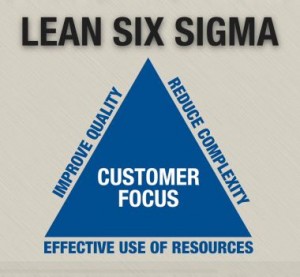 Lean Six Sigma is a management strategy that leaped into the forefront of business thinking when legendary executive Jack Welch applied it at General Electric in 1995 — and now more companies are adopting its principles to increase efficiency and reduce costs.
Lean Six Sigma is a management strategy that leaped into the forefront of business thinking when legendary executive Jack Welch applied it at General Electric in 1995 — and now more companies are adopting its principles to increase efficiency and reduce costs.
At its core, Lean Six Sigma exists to improve the performance of business processes by identifying and removing the causes of waste and minimizing variation. I can’t think of a single business that wouldn’t benefit from those things.
Start Early for Maximum Impact
The key to getting the most out of Lean Six Sigma is adopting its strategies early in the design process. By subjecting plans to its rigorous analysis on the front end, Lean Six Sigma can save clients millions of dollars. How? By trimming the size of proposed buildings, reducing labor costs and producing consistently excellent products.
Lean Six Sigma is a mindset to be interwoven through the design process. It includes a series of tools that can help you step back from the emotion of planning and deal with hard data.
Let’s say an organization is in the early stages of designing a project. Often, individual departments and internal groups come to the table with their own agendas and ideas. To get past parochial attitudes, the Lean Six Sigma process asks people to examine their priorities for a project and weigh the comparative value of each idea. It pulls individual emotions out and gets people on the same playing field. Most importantly, it helps identify the best decisions.
A Proactive Approach
Unlike ineffective reactive processes, Six Sigma is a proactive approach streamlined for success. By carefully analyzing, measuring and aligning each step of the design plan to determine maximum efficiency, Six Sigma starts the project off right.
When traditional reactive systems are used, the only way to catch design problems is after the project’s completion — when the damage has already been done. But these continuous, proactive procedures help safeguard again costly surprise repairs in the future.
Creating a Value Stream
The “Lean” side of the Lean Six Sigma analysis uses value stream mapping to determine the best planning course from beginning to end — and back. The result is a value stream that aligns the right people with the right process, providing value to the customer.
By applying the principles of Lean Six Sigma, companies and organizations save substantial time — and money. The rigorous Lean Six Sigma evaluation process is focused on bottom-line results and satisfying customers — and who wouldn’t want that?
Clients can expect a 20 percent to 50 percent improvement in such key measurements as cycle time, quality, inventory turnover and delivery speed, with even greater improvements possible in some situations.
Finding a way to make it work and work repeatedly is the surefire way to improve overall quality and save on the cost of labor. That’s the Lean Six Sigma way.
If you’d like to learn more about using Lean Six Sigma for your organization, we should chat. Feel free to connect with me and/or one of my colleagues on LinkedIn.
Michael Glavin is a Lean Six Sigma practitioner at Burns & McDonnell who specializes in master planning, lean manufacturing and optimization for customer demand. He has spent more than 25 years working with commercial and defense companies driving continuous improvements throughout their organizations. Want to learn more about what Lean Six Sigma can do for your organization? Connect with Michael on LinkedIn.
